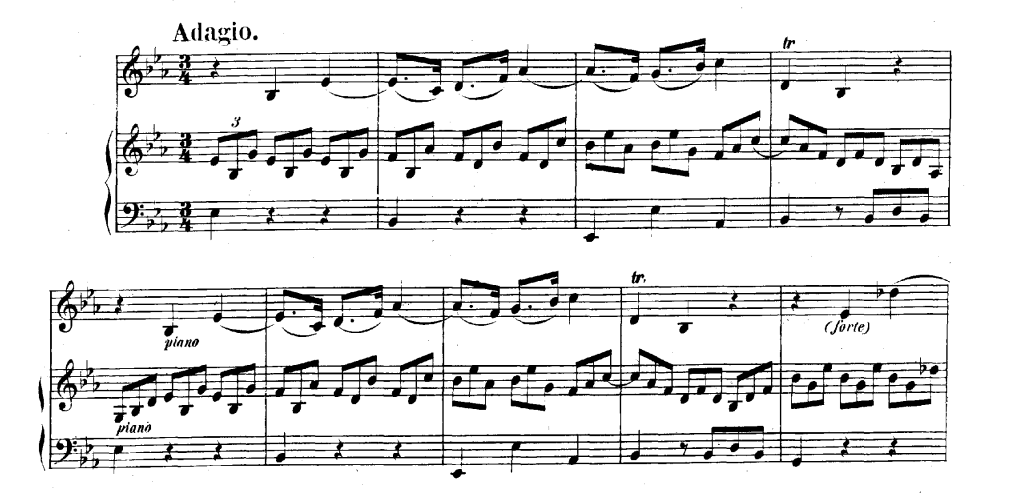My violinist and I read through a couple movements of Bach’s violin sonata BWV 1017 on Thursday. When we got to the Adagio, I noticed that she was playing the solo line as though it were a triplet figure instead of a dotted eighth-sixteen. After we finished the movement I asked her about it. She said that though it was notated that way, it felt more natural to play along with accompaniment.
I have been thinking a lot about things like this lately. I finished the summary section in Stephen E. Hefling’s 1993 book, Rhythmic Alteration in Seventeenth- and Eighteenth- Century Music: Notes Inegales and Overdotting. This expensive little book that I interlibrary loaned is an extensive survey of sources about playing music differently than it is written.
Hefling is one of a number of scholars I have been reading in an effort to update myself on performance practices. I am finding that Hefling, along with John Butt and others have a much more practical approach to what Butt calls Historical informed Performance.

One of the main insights I am getting from Butt’s book, Playing with History, is the acknowledgement musicians are making that how we make music, even historical music, is more about now than then.
Which brings me back to my violinist’s instinctual change in the music. Amy (her name) is a highly trained musician with many years of experience in symphonic music as well as fiddle music. Her musical sensibilities are strong. Her changing of Bach represents to my mind a practical and beautiful response to the notes on the page. This is what it means that how we make music is more about now than then. We strive to inform ourselves, but ultimately what we do is informed by who we are at the moment and where we are playing and what instruments we are using.
Imagine That – On The Media – WNYC
As I mentioned in yesterday’s blog, I am finding much of the hysteria on the left (my side) off putting. I am a fan of “On the Media,” however, the way they begin this week’s show had me flipping it off and moving to CounterSpin for my media fix this morning while cleaning the kitchen.
In an effort to overcome her and Bob’s own anxiety, Gladstone seems to be saying that the media (CounterSpin calls it the corporate media) failed the public with its own failure of imagination in regards to Trump. We need more imagination, she seems to be saying.
I think this is bunk. What we need is more clarity and better reporting and less transcribing of official statements and tweets of the president Elect. I will return to “On the Media” and finish listening to this episode.
In the meantime, I think that FAIR (Fair and Accuracy in Reporting) does a good job of critiquing the media, even though it’s obvious to me that they share my political point of view. But there’s no denying that they put their finger on things.
If We Were ‘Staggered’ by Police Brutality, Wouldn’t Walter Scott Mistrial Have Knocked Us Over? | FAIR
I like it when they cite current coverage of a story and point out its weaknesses.
It is late 2016: Do you know where your state is on GASB 77 corporate welfare data? | Good Jobs First
They brought attention to this obscure rule change that could open up better transparency on corporate welfare in the states. You know like the recent buying off of Carrier by President elect Trump.
Hell, I recommend their entire new podcast:
Greg LeRoy on Carrier Deal, Kelly Hayes on What’s Next for #NODAPL | FAIR
